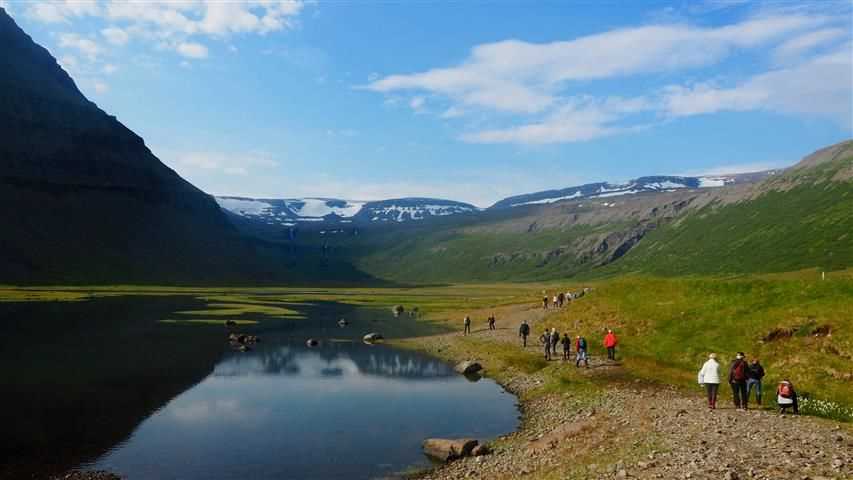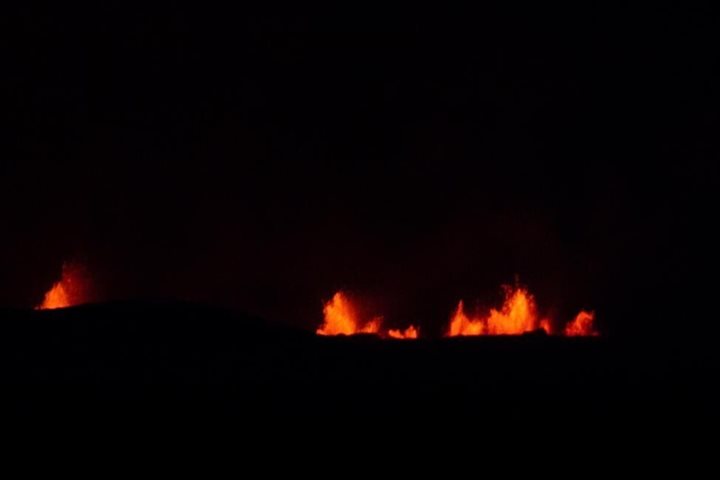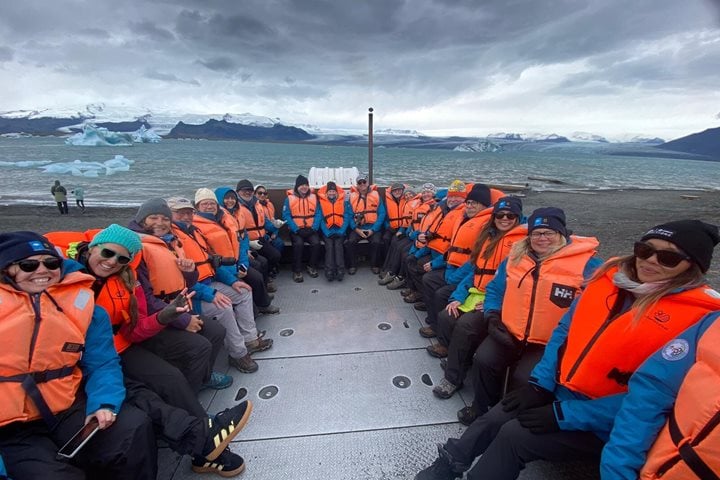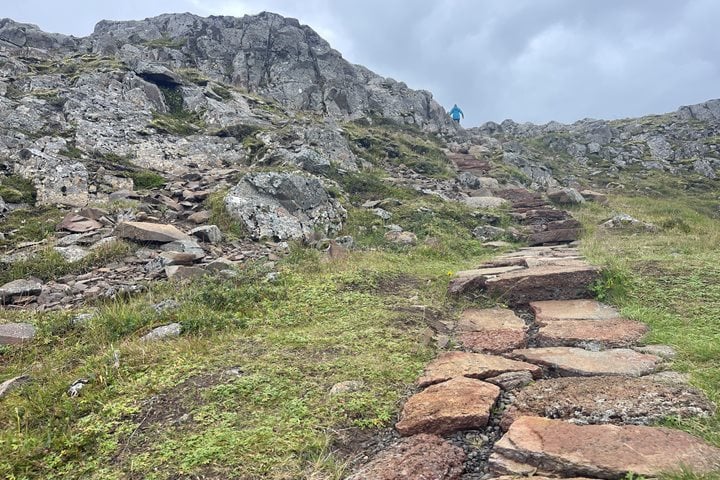Weather is an endless topic of conversation in Iceland. The Icelandic people are either eagerly awaiting a break in the clouds for the sun to finally shine through, or they are anxiously preparing for the winds to howl and pummel the landscape. This is a country of extremes: fire and ice, sunlight and darkness.
Our morning in Ísafjörður, Westfjords, was glorious. The sun shone down on National Geographic Explorer as guests disembarked for various hikes. Some elected to hike to Valagil, one of Iceland’s beautiful waterfalls. Others got up close to the flora along another trail. The sunshine illuminated a number of colorful gentians as well as sundew, grass of parnassus, hairy stonecrop, and the ubiquitous Arctic thyme. The landscape is so windswept that most of the inhabitant plants don’t grow very high; they stay close to the warm ground.
Those on the flora excursion were treated to stunning views of the fjords around Ísafjörður, a traditional musical performance in a local Lutheran church, and a walk around the botanic gardens. Other guests explored the quiet town center on a guided walking tour.
The afternoon brought a different weather story altogether. As we boarded the ship after the morning’s activities, the wind began to build and a weather front swept along the coast, obscuring the sun. As the clouds converged overhead and the wind increased, we made our way east and heard lectures on Icelandic geology, language and culture.
After dinner, expedition leader Peter Wilson announced that there was a large iceberg in the distance—an incredibly unusual occurrence along the coast of Iceland and one that Captain Aaron Wood had never witnessed before. The iceberg had probably traveled all the way from the east coast of Greenland, swept toward Iceland by the northerly winds. As we approached the iceberg, several white-beaked dolphins fully breached just in front of the bow, relishing the movement of the ocean and slapping audibly back into the sea.







